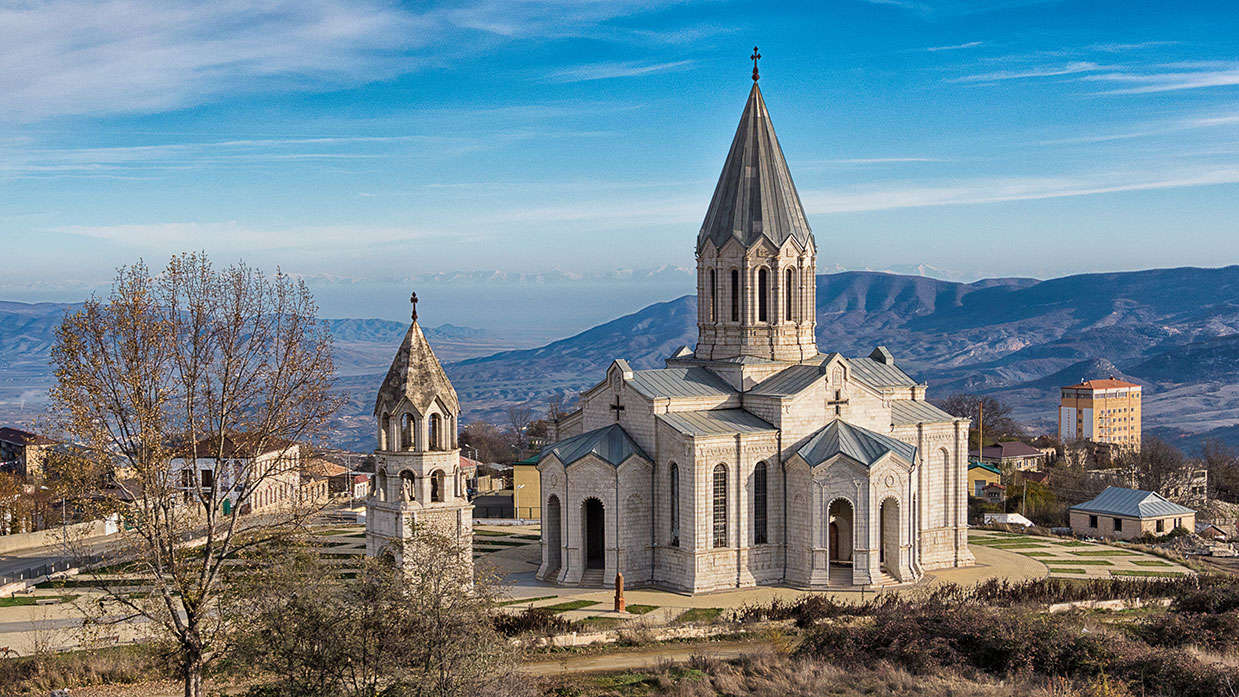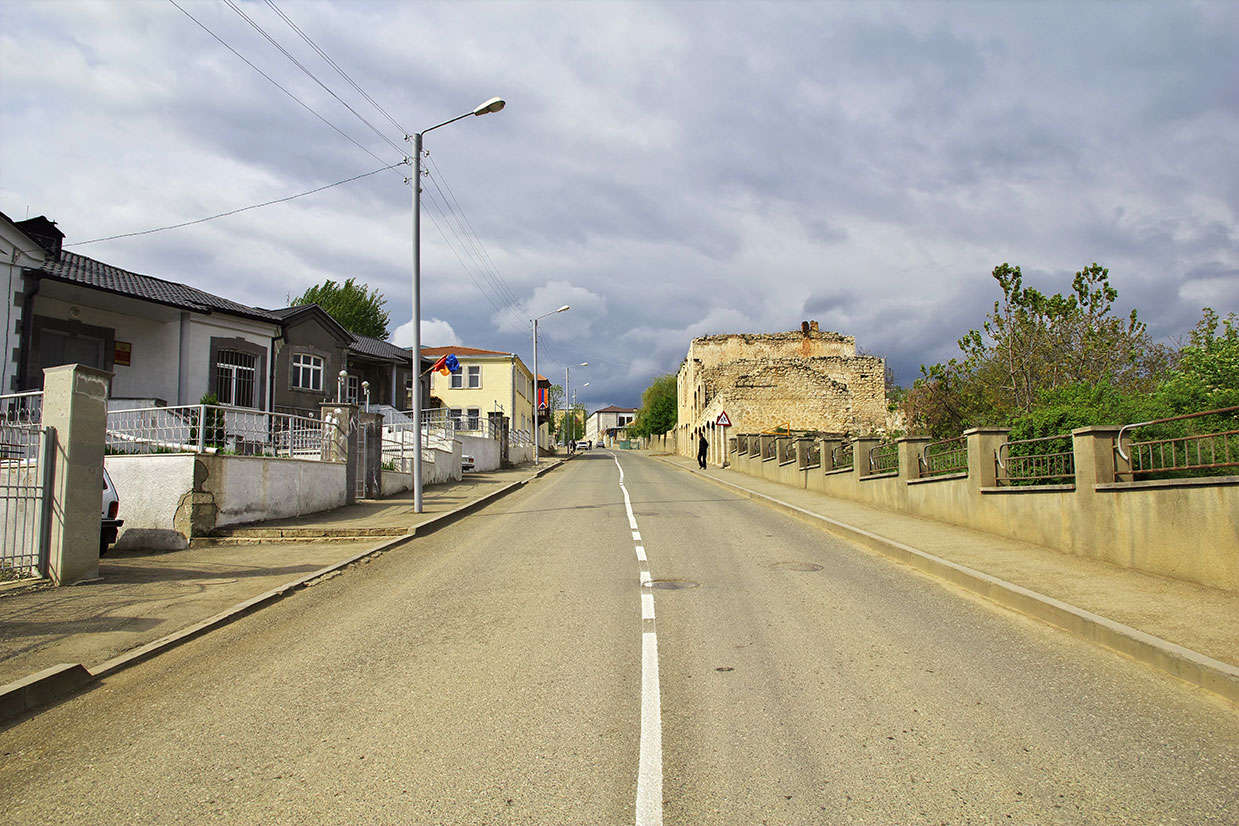Shushi
Shushi is a city in the disputed area of Nagorno-Karabakh, located in the Southern part of the Caucasus. Since its liberation in 1992 during the Nagorno-Karabakh war, it is subordinate to the self-proclaimed Republic of Artsakh, though, Shusha is de jure a part of the Republic of Azerbaijan, having the status of the administrative division of the surrounding Shusha Region. Located at an altitude of 1,400-1,800 meters in the scenic Karabakh Mountains, Shushi was a well-known mountain resort within the Soviet Union. According to a few sources, Shushi was regarded as a city and an ancient fortress in the Armenian principality (melikdom) of Varanda during the Middle Ages and the 18th century. From the middle of the 18th century to 1822, Shushi was the capital of the Karabakh Khanate. The city became one of the cultural centres of the South Caucasus after the Russian conquest of the Caucasus region, which started from Qajar Iran in the first half of the 19th century. It was one of the most important Armenian cities of the Transcaucasus which was the centre of an autonomous Armenian principality from the Middle Ages until the 1750s. It also had religious and strategic significance for the Armenians, housing the Ghazanchetsots Cathedral, the Church of Kanach Zham, two other churches, a monastic complex, and served (along with the Lachin District in the west) as a land connection to Armenia.
Throughout modern history, the city had mainly a mixed Armenian-Azerbaijani population. After the Shushi massacre of 1920 by Azerbaijani troops and their Turkish supporters, half of the Armenian population was mostly killed and expelled, and the city turned into a town, where the overwhelming majority of the population were Azeris. After the liberation of Shushi in 1992 by Armenian troops, its population was significantly decreased again and now it’s almost entirely Armenian. The magnificent Savior Cathedral (1868- 1887) dominates the main square of the city. During its construction, the cathedral Etchmiadzin was taken as a model (the floor plan is the cross with four protruding apses). It is one of the largest churches in Artsakh.
Shushi is one of the main Armenian religious and cultural centres and among the most outstanding Armenian cities of the Caucasus. The East Armenian version of four Gospels (Bibles) was completed in 1830 in Shushi and then published in Moscow for the first time. The city of Shushi is located on a plateau in the heart of Artsakh, ten kilometres away from the capital Stepanakert. Due to geographical position, this plateau has always played an important strategic role. Shushi rapidly developed and became one of the intellectual centres of the Caucasus in the 19th century. Agreat number of political thinkers and representatives of the cultural elite of the Caucasian Armenians were educated here. On the territory of the city of Shushi various clay objects and pottery from the XIV-XIIIcentury BC were excavated, which testify to the existence of a fortress. The city served as a defensive fortification, which was later fortified with a defensive wall. In this area, there were also old cemeteries with the traditional Armenian cross-stones from the IX-XII centuries excavated in the 19th century. Since 1820, Shushi was considered a great cultural centre of Armenia with advanced education and printing: the city had 5 printing houses that published more than 150 books. Shushi is currently considered a historical sanctuary and is undergoing a reconstruction process.







